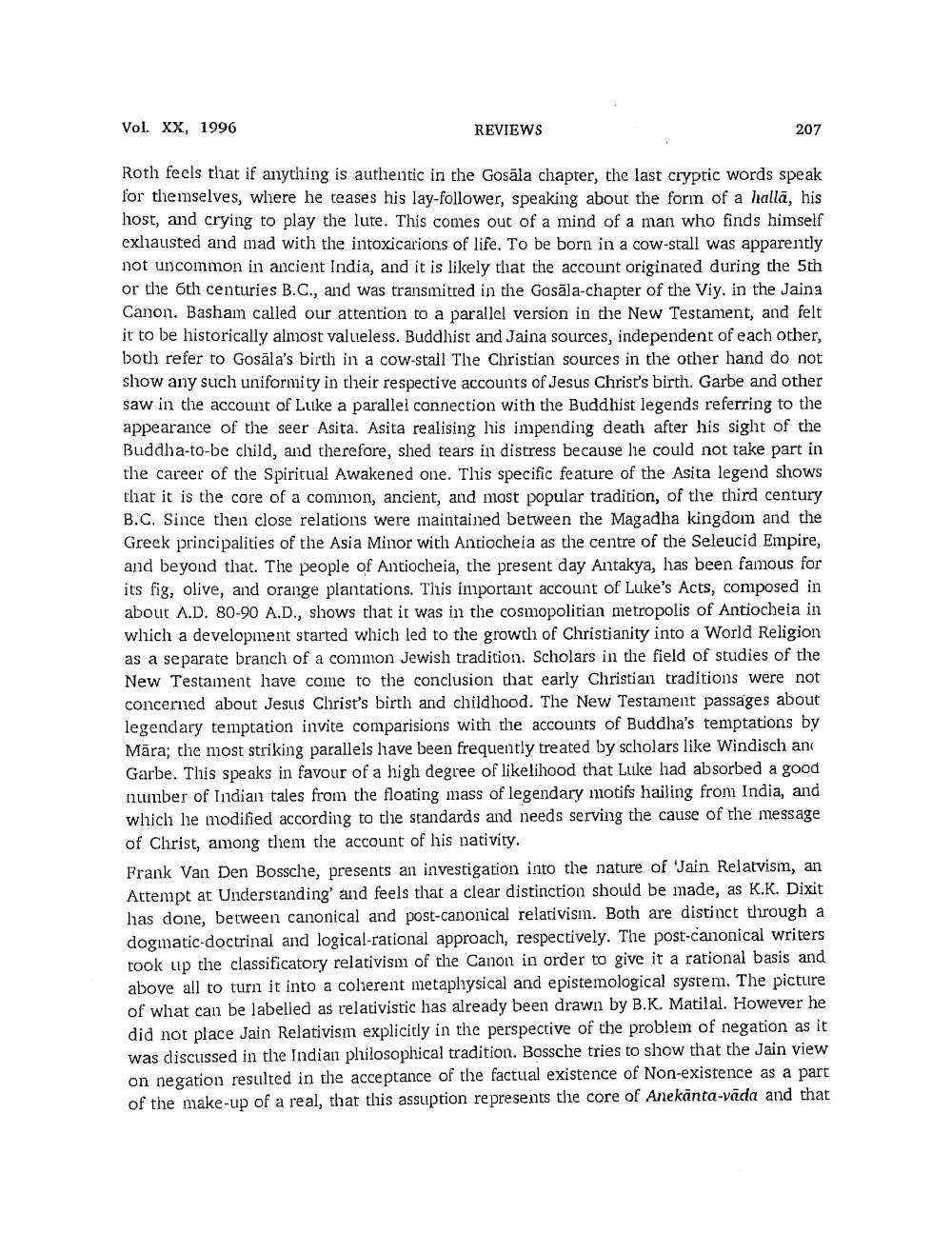________________
Vol. XX, 1996
REVIEWS
207
Roth feels that if anything is authentic in the Gosāla chapter, the last cryptic words speak for themselves, where he teases his lay-follower, speaking about the form of a hallā, his host, and crying to play the lute. This comes out of a mind of a man who finds himself exliausted and mad with the intoxicarions of life. To be born in a cow-stall was apparently not uncommon in ancient India, and it is likely that the account originated during the 5th or the 6th centuries B.C., and was transmitted in the Gosāla-chapter of the Viy, in the Jaina Canon. Basham called our attention to a parallel version in the New Testament, and felt it to be historically almost valueless. Buddhist and Jaina sources, independent of each other, both refer to Gosäla's birth in a cow-stall The Christian sources in the other hand do not show any such uniformity in their respective accounts of Jesus Christ's birth. Garbe and other saw in the account of Luke a parallel connection with the Buddhist legends referring to the appearance of the seer Asita. Asita realising his impending death after his sight of the Buddha-to-be child, and therefore, shed tears in distress because lie could not take part in the career of the Spiritual Awakened one. This specific feature of the Asita legend shows that it is the core of a common, ancient, and most popular tradition, of the third century B.C. Since then close relations were maintained between the Magadha kingdom and the Greek principalities of the Asia Minor with Antiocheia as the centre of the Seleucid Empire, and beyond that. The people of Antiocheia, the present day Antakya, has been famous for its fig, olive, and orange plantations. This important account of Luke's Acts, composed in about A.D. 80-90 A.D., shows that it was in the cosmopolitian metropolis of Antiocheia in which a development started which led to the growth of Christianity into a World Religion as a separate branch of a common Jewish tradition. Scholars in the field of studies of the New Testament have come to the conclusion that early Christian traditions were not concerned about Jesus Christ's birth and childhood. The New Testament passages about legendary temptation invite comparisions with the accounts of Buddha's temptations by Māra; the most striking parallels have been frequently treated by scholars like Windisch an Garbe. This speaks in favour of a high degree of likelihood that Luke had absorbed a good number of Indian tales from the floating mass of legendary motifs hailing from India, and which he modified according to the standards and needs serving the cause of the message of Christ, among them the account of his nativity. Frank Van Den Bossche, presents an investigation into the nature of 'Jain Relatvism, an Attempt at Understanding' and feels that a clear distinction should be made, as K.K. Dixit has done, between canonical and post-canonical relativism. Both are distinct through a dogmatic-doctrinal and logical-rational approach, respectively. The post-canonical writers took up the classificatory relativism of the Canon in order to give it a rational basis and above all to turn it into a coherent metaplıysical and epistemological system. The picture of what can be labelled as relativistic has already been drawn by B.K. Matilal. However he did not place Jain Relativism explicitly in the perspective of the problem of negation as it was discussed in the Indian philosophical tradition. Bossche tries to show that the Jain view on negation resulted in the acceptance of the factual existence of Non-existence as a part of the make-up of a real, that this assuption represents the core of Anekanta-vāda and that




